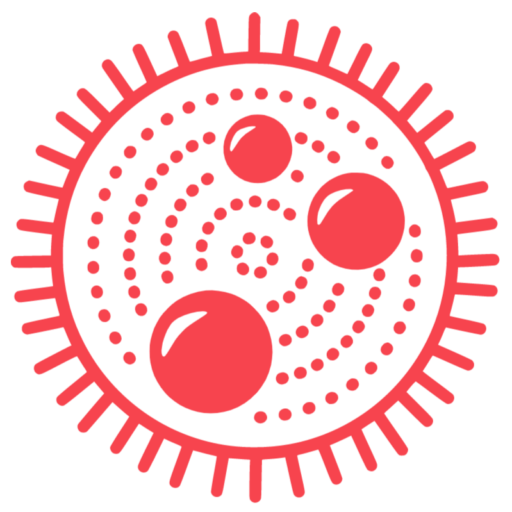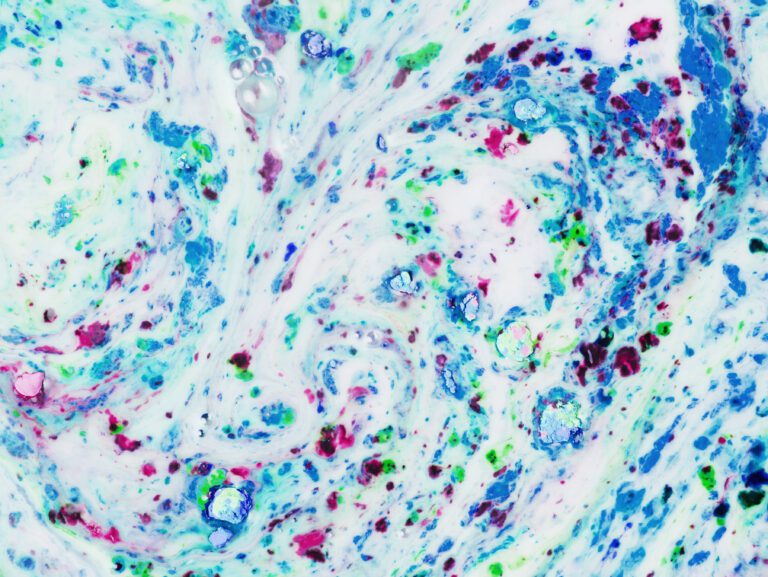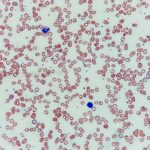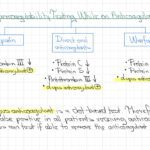
Anemia of Inflammation (AoI) was formerly known as anemia of chronic disease. AoI is the second most common cause of anemia worldwide after iron deficiency anemia (IDA). AoI occurs due to inflammation and immune response that causes abnormal iron metabolism. However, inflammation is not the only process that affects iron metabolism in chronic conditions and the pathophysiology may be more complex. This post will discuss the most important facts about AoI and how to diagnose and manage it. Before discussing the pathophysiology of the disease, let’s briefly discuss hepcidin.
What is Hepcidin?
Hepcidin is a hormone produced by the liver that helps regulate iron levels in the body. Since we can’t remove excess iron directly, the body controls how much iron enters by regulating absorption. Think of hepcidin as the gatekeeper for iron: it blocks the door in the intestine to prevent excess iron from being absorbed. To achieve this, hepcidin binds to ferroportin, a protein that exports iron from cells into the bloodstream. Ferroportin helps release iron from the gut cells into the bloodstream for absorption, and from storage cells like those in the liver and spleen into the circulation.
When there is excess iron, especially in the blood, hepcidin production increases. This higher hepcidin level binds to ferroportin (“closing the doors”) and stops iron from being absorbed in the gut and released from storage, effectively locking it away in the cells.
Hepcidin is also an acute phase reactant and its levels rise during inflammation. In chronic or inflammatory conditions, elevated hepcidin reduces iron absorption and prevents the stored iron from being used to produce red blood cells, even in the absence of true iron deficiency. This is thought to be a protective mechanism to limit iron availability to pathogens that may need it to grow, helping the body defend against infection.
Pathophysiology of Anemia of Inflammation
AoI is caused by acute or chronic inflammatory processes that lead to increased production of inflammatory markers including hерcidiո. The elevation of hepcidin blocks the body’s ability to use iron to produce red blood cells leading to anemia.
Causes of Anemia of Inflammation
Importantly, causes of anemia of inflammation may not classically be considered as “inflammatory.” However, many of these conditions cause chronic inflammatory processes that lead to AoI. Some of the most common examples include chronic kidney disease, congestive heart failure, chronic obstructive pulmonary disease (COPD), and diabetes. Here is a list of causes of anemia of inflammation:
- Chronic cardiopulmonary and metabolic conditions: chronic kidney disease, congestive heart failure, chronic obstructive pulmonary disease (COPD), pulmonary hypertension, and diabetes. Obesity is another risk factor for AoI.
- Autoimmune diseases: Rheumatoid arthritis, systemic lupus erythematosus (SLE), inflammatory bowel disease (IBD), sarcoidosis, and others.
- Infections: Particularly subacute and chronic infections such as HIV, endocarditis, osteomyelitis, parasitic, septicemia, tuberculosis, and many others.
- Solid tumors.
- Hematologic malignancies: include most disorders and rare conditions such as Castleman syndrome.
- Classical hematology causes: aplastic anemia, hemolytic anemia, thalassemias, and sickle cell disease.
- Critical illness or trauma.
Clinical Manifestations in Anemia of Inflammation
- Clinical features of anemia are similar to other types of anemia including pallor, fatigue, exertional shortness of breath and decreased exercise tolerance, dizziness, and cold extremities, among others.
- Other clinical features are related to the cause of AoI. For example, inflammatory arthritis points towards a rheumatologic cause, and fevers are most likely due to infections or malignancy.
Diagnosis of Anemia of Inflammation
Anemia of inflammation should be considered a diagnosis of exclusion. Investigation for other causes of anemia depending on the clinical setting should be performed as well. Unfortunately, no test can confirm AoI. Identifying the most likely cause is important both for the diagnosis and management of this condition.
Laboratory Findings in Anemia of Inflammation
- Normocytic anemia: Typically, AoI is characterized by low hemoglobin with a normal mean corpuscular volume (MCV).
- Hypoproliferative anemia: AoI causes decreased production of RBCs demonstrated by a low reticulocyte count or index.
- Iron studies: Crucial to diagnose anemia of inflammation and assess if concomitant iron deficiency may be present. The two most useful tests in the iron panel are TIBC and ferritin. In AoI, since hepcidin is elevated leading to decreased exit of iron into the bloodstream, iron in the blood is decreased. Decreased iron in blood means that hemoglobin in circulating RBCs is less “saturated” or bound to iron. TIBC measures that binding capacity and helps determine if AoI is present. TIBC is decreased with AoI but is increased in iron deficiency. Ferritin is increased in AoI as it is an inflammatory marker and decreased in iron deficiency (total storage of iron is low in the body).
- Inflammatory markers: C-reactive protein (CRP) can be used as evidence of inflammation in the body. However, CRP may not be elevated in all chronic conditions that cause AoI.
- Other tests: Performed to assess for other causes of anemia depending on the clinical picture to assess for nutritional assessment (vitamin B12, folate), hemolysis, malignancy, and others.
Summary of Anemia of Inflammation and Iron Studies:
| Test | Anemia of Inflammation | Iron Deficiency Anemia |
|---|---|---|
| Iron | Decreased | Decreased |
| Total iron binding capacity (TIBC) | Decreased | Increased |
| Transferrin saturation (Tsat) | Decreased | Decreased or normal |
| Ferritin | Elevated | Decreased |
Management of Anemia of Inflammation
The main goal of the treatment of AoI is to improve the patient’s symptoms and overall health by managing the underlying cause of this disorder. For example, if anemia of inflammation is caused by rheumatoid arthritis, managing this condition would be the priority. In AoI, a hemoglobin goal is not clear and the recommendation is to focus on managing the underlying inflammation. There are two main areas to focus on in the management of AoI:
- Treatment of the underlying disorder: An important consideration is to work as a team with the patient’s primary care provider, subspecialists, and other members of the medical team.
- Management of anemia (besides addressing the suspected cause):
- Concomitant iron deficiency: The table above shows the difference between AoI and IDA. Ferritin and TIBC help differentiate between both disorders. However, when both are present, discrepant results may occur. You will find some examples below to test yourself and differentiate between these situations. Iron administration can be considered if ferritin is <100 ng/dL or Tsat <20%. A high ferritin with low Tsat is relatively frequent as well. In most cases, iron is not considered for ferritin levels above 500 ng/dL. Oral iron may not be optimally absorbed in inflammatory disorders due to the lack of ferroportin in the gut from the elevated hepcidin levels and may require intravenous iron. For more information on iron deficiency, please check this post.
- Blood transfusions: Although anemia is usually not severe enough to require blood transfusions (usually when hemoglobin is <7 g/dL), packed RBCs (pRBCs) can be considered as part of the treatment.
- Erythropoiesis-stimulating agents (ESAs): These are considered after all the other options have been considered and optimized. ESAs are usually considered only for patients with symptomatic anemia, management of chronic kidney disease-related anemia, or when other therapies cannot be used (for example, due to religious preferences).
- Ongoing research: This includes the use of agents such as hepcidin antagonists or ferroportin stabilizers and anti-inflammatory antibodies such as monoclonal antibodies.
- Palliative care: Consider palliative care, particularly for patients with impactful chronic or terminal conditions, and when significant symptom burden occurs.
Test Yourself:
We hope you enjoyed this post! Please, leave us any comments or questions below. Feel free to rate our post using the star system below if your time allows. Your feedback is important to us. Thank you!







